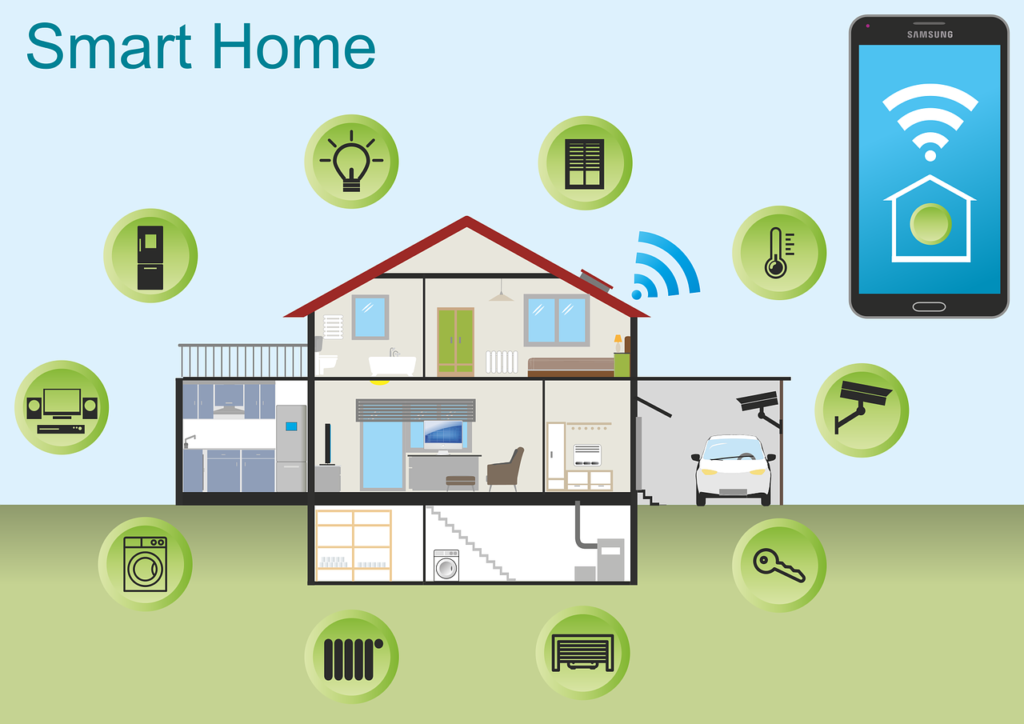Table of Contents
Perhaps your home design or aesthetic is already on point, and now you are thinking of the next home improvement project you want to dive into. Do smart door locks or thermostats you can control with your phone sound appealing to you? If you are considering future-proofing your house by transforming it into a smart home, read on to find out how you can begin this journey into the future.

First things first: what exactly is a smart home?
Oxford Languages defines a “smart home” as a home equipped with lighting, heating, and electronic devices that can be controlled remotely by phone or computer. There are a lot of components needed to build a smart home, such as sensors, speakers, security cameras, and so on. It really all depends on the level of future-proofing you want to achieve for your house.
Making all these elements come together so that your personal needs are served can be an intimidating task, especially if you have little knowledge on how to go about it, but your willingness to learn will help you get started. Here are some of the steps you can take to start future-proofing your home with smart technology.
What to remember when future-proofing your home with smart technology
Investing in smart technology to future proof your home can be a time-consuming and expensive undertaking, depending on the level of technological sophistication you want to achieve in this regard.
In the past, building a smart home required a combination of complex networking and scripting, as well as DIY technological skills. Thankfully, the fast-paced development of technologies has now made it easier even for non-tech savvy homeowners to future-proof their houses with smart technology.
The fundamental rule you must remember is to ensure that the smart home products you purchase are compatible with each other so that you have a solid foundation that you can build on over time. The second most important thing is that you should invest in a good wireless router, powerful enough to reach all the nooks and crannies in your dwelling.
Build the foundation for your smart home
While there is still no singular way to automate multiple functions in your entire home flawlessly, you can start building a solid foundation with some off-the-shelf gadgets that you can control either with your smartphone or voice command.
Tech companies like Nest have applications that allow homeowners to control a select number of smart home gadgets. There are also more generic smart home devices from makers like Zigbee that offer Bluetooth-like technology, allowing gadgets to communicate with smart hubs like the Samsung SmartThings.
Meanwhile, some gadgets need specific apps or bigger smart home platforms. Apple’s HomeKit is an example of a platform that limits the devices you can use since all the gadgets you can connect with are limited to Apple Smart home products only.
Lastly, find a smart home security system that can connect with your Wi-Fi network to control and monitor your devices’ activity using an app or your mobile phone. You can start small with entry-level smart home systems that come with door and window sensors, motion detectors, and a hub that communicates with your devices.
The key is to get devices with the widest compatibility. What are some of the primary smart home devices that will help you get started?
Smart Lighting
Smart lighting is probably the most basic smart home improvement project you can do. The whole thing is relatively easy to set up and will not break the bank.
Many smart lighting systems can work sans a central hub and interact with other smart home components. Smart bulbs like Philips Hue that you can connect through a Wi-Fi bridge, like ZigBee, to your router allow you to directly control one or a group of lights from your smartphone. You can set the brightness and color temperatures. Different triggers may also be used to turn these lights on or off.
Smart switches made by Ecobee or TP-Link work using a Wi-Fi network without the need for a central hub. If you mostly rely on lamps to light up your space, a smart plug like Wemo Mini or ConnectSense Smart Outlet 2 gives you the ability to turn your lamp on or off using an app.
Smart Locks
There are smart locks that will enable you to lock and unlock doors from your phone. In some cases, the apps can allow you to give temporary access to these locks to any trusted family member or friend.
Smart Thermostat
Installing a smart thermostat is not only one of the easiest ways to future-proof your home but also an awesome means to promote sustainable living daily.
Heating and cooling your home is made more efficient with a smart thermostat and that will reflect on your utility bills. Having a smart thermostat will give you complete control of your HVAC system even when you are not home since you can manipulate its functions remotely using your chosen device.
Smart Audio System
There are multiroom speaker systems from Yamaha and Sonos that are mostly self-contained, which gives you the capability to put speakers in multiple rooms. This will allow you to stream music to all units in sync or have each play different tracks, depending on what the person in the room prefers.
Smart Security System
There are full home security systems that include indoor motion sensors, alarms, and door sensors. Abode is an example of a smart security system that allows homeowners to self-monitor their houses and keep them safe from break-ins. It even provides links to emergency services.
Build a smart home today
Once you have your smart lighting, locks, thermostat, audio system, and security systems in place, you can explore other, more complex smart home features to future-proof your home even further. Having hands-free sanitization solutions or devices you can control with your phone will prove valuable amid a global pandemic, according to an interior design expert.
The key to having a seamless smart home experience is to pick devices that are compatible with each other so that you can integrate the features you want and need with ease.



